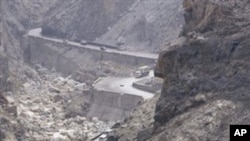Since its earliest days of independence, Kazakhstan has been Central Asia’s economic powerhouse, said U.S. Principal Deputy Assistant Secretary of State for South and Central Asia Geoffrey Pyatt in a recent speech.
The decision by Kazakh President Nursultan Nazarbayev to invite major oil companies to develop the country’s vast hydrocarbon resources in the 1990s has put the country on track to produce one of the world’s largest increases in non-OPEC oil supplies over the next 10-15 years. Kazakhstan has also become the leading destination in the region for U.S. investment. Over the last twenty years American companies have invested more than $16.5 billion in Kazakhstan.
“Yet for all its progress,” said Principal Deputy Assistant Secretary Pyatt, “Central Asia remains one of the least integrated areas of the world.” Historically by virtue of its geography, the region served as a hub of interlinking trade routes through which goods and people passed from one continent to another. Today, Kazakhstan’s neighbors and near-neighbors once again include some of the fastest emerging economies in the world. But stronger regional ties would accelerate economic growth.
That’s why the United States supports the idea of a New Silk Road, an initiative that would encourage a network of economic, transit, energy, and people-to-people connections running throughout Central and South Asia, with Afghanistan at its heart. Such a network would strengthen regional economic integration by two means: first, through trade liberalization, which includes the reduction of non-tariff trade barriers; improved regulatory regimes; transparent border clearance procedures; and coordinated policies to accelerate the flow of goods, services, and people throughout the region; and second, through energy and infrastructure which includes roads, bridges, electrical transmission grids railways, and pipelines to connect goods, services, and people.
In order to maximize foreign investment in the South and Central Asia region, countries must cultivate a climate conducive to private sector interest, including adopting policies that are transparent, predictable, and subject to a strong rule of law.
All of Afghanistan’s neighbors and near-neighbors, including Kazakhstan, stand to benefit from enhanced regional cooperation, which will create jobs and offer an alternative to extremism and instability. One of the greatest vehicles this region has to promote peace and stability is the promise of economic opportunity.
Kazakhstan And The New Silk Road

Initiative that would encourage a network of economic, transit, energy, and people-to-people connections.
















